#grasshopper plugins
Explore tagged Tumblr posts
Text
youtube
I created this simple component for Grasshopper. This component has 3 inputs: 1- a list of numbers 2- Lower limit 3- Upper limit. The component will then compare each entry in the list of numbers and if the number falls between the Min and Max limits(bigger or equal to the Min and smaller or equal to the Max at the same time) it will output True, otherwise false. In this video, you'll see a real test case/scenario where this component might be useful.
Download Link: https://drive.google.com/file/d/15sjSzagNqwUPKp79cjR2BuUX1EiyhlXn/view?usp=sharing
#grasshopper3d#rhino grasshopper#grasshopper tutorials#grasshopper plugins#mcneel#mcneel grasshopper#mcneel rhino#parametric 3d#parametric design#parametric modeling#parametric plugins#Youtube
0 notes
Text
Synthesizers – about little squirrel and good little animals

So, I have in my pack of music instruments – midi keyboard for 49 keys. Blue color. Cool thing. It is AxelVox Key49j. And I doing music exercises with this music instrument. I am doing exercises with no connected instrument. So, in spring, I can say, it was started a new step for me. One more try. New attempt.


I know seven chords. One gamma. And I play three compositions from a textbook with exercises. And I am doing exercises with book “In music with joy”. So, it is also a drawn a little sun.

The best thing I can do it is little song – “squirrel”. And, also, it is “Ladushki” (hands something) and “Ice Mountain”. So, these three things I play. I train left and right hand separately. So, together I do no played it yet. So, I can say, first step is made towards to songs about little songs about good and kind animals!

That’s for sure! Little songs about good and kind animals. My theme. So, it will be some little animals there. So, really, something like it can be, like some little songs like composition little song – “Squirrel”, as it can be! But, for now, only melodies, it is, I think, it will be melodies now. A skill to speak and sing – it is standalone skill. It is a little thing about a step. A first step, that was made.

Imagine for yourself, for example a duckling. Which can run around the green grass. About what music he can run? And later to jump into the river or lake. And paws he moves, he moves with paws, so funny into the water. And runs all over the water, or, even, swim. So, this is example. So, in form of melodies. Not a big length. Not hard.

And more, yellow chickens are running the grass. They have so big fun there. In a sunny day. Goose is running around a small lake. He spread his wings. He has a red beacon. Such a reddish. Little mouses are sitting somewhere in the fields, they are in their little house. Mole is digging a holes and doing plants of the trees. So, lots of music themes!


So it will be, as idea, funny melodies. About good and kind little animals. My friends. Which I can see soon. When I will go to a country house. In a grass, there are grasshoppers, they are good musicians. And also, a frogs are excellent singers. They are doing quak quak sounds very good. Maybe, I can meet there someone else. And all of these under the little sun. In a green grass. It is beautiful!


Such artistic idea and theme. And even more – synthesizer – it is about lots of sounds onboard. Very different electronic music. From more straight and raw up to more delicious and elegance. From hard drive to melody beauty. Retro wave, synthesizers music, style of 80s rhythms and melodies. With different plugins. Genres of electronic music – there are lots of them. So, synthesizers – it is unlimited way to do music! With very different sounds and ideas! Melodies and rhymes!



Dima Link is making retro videogames, apps, a little of music, write stories, and some retro more.
WEBSITE: http://www.dimalink.tv-games.ru/home_eng.html ITCHIO: https://dimalink.itch.io/ GAMEJOLT: https://gamejolt.com/@DimaLink/games
BLOGGER: https://dimalinkeng.blogspot.com/
#music#music learning#synth#synthesizers#simple melodies#doing music#axelvox key49j#good and kind animals#little animals#funny songs#electronic music#classic music#music classes#squirell#music textbook#songs about animals#ice mountain#hands#ladushki
13 notes
·
View notes
Note
A small group actually, about five people of the Science Department were the ones to make the camera, radio and phone. They had a lot of fun as well since making something so small and can actually work was a interesting challenge for them.
Yeah, more often then not Kafka ends up sitting on either Kikoru's or Eiji's shoulders when he has to visit Gen. Its a heck of a lot safer than being in a that room.
Something I've yet to metion is how Kafka deals with reports, or rather how he is still able to send anything through a computer for that matter.
Theres two options Kafka has. The first being the one he uses the most, asking for help. He can't exactly use the keyboard like he used to so often then not he gets some to help him write up any reports or something he's looking for.
Its the rookies that ends up with this task the most, as they have more free time to actually help Kafka on this.
The second? Well, aggressive mad grasshopper is the best description I can give you. Basically, Kafka jumps around the keyboard to write anything down. The is the method Kafka use the least of as he often becomes very tired if he does it too fast or accidentally breaks the board in two if he put too much strenght when jumping.
He also tend to destroy any keys in the process as well. Which most often ends up with a new keyboard by the end of the day.
Also, someone took a vidoe of it ones. Which quickly became popular among the officers as it is comical as all hell to see Kakfa jump around the keyboard just to write down a few words. Its even better when Kafka notice he has to back track or erase something.
Even Mina can't help but laugh when Kafka realize he has to redo something because he jumped somewhere wrong.
Newest invention for the Science Department being a mini keyboard plugin. Also that video no doubt breached containment and gone public at some point. Someone probably memed the hell out of it by photoshopping Kafka in different scenarios.

#sonicasura#sonicasura answers#asks#anonymous#kaiju no. 8#kaiju no 8#kn8#kaijuno.8#kaijuno8#kaiju number 8#monster no 8#monster no. 8#kafka hibino#hibino kafka#chibi shenanigans#chibi anon
6 notes
·
View notes
Text
What's the best 3D modelling software between SketchUp and Rhinoceros?
The choice between SketchUp and Rhinoceros (Rhino) depends on your specific needs, the type of 3D modeling tasks you'll be , and your familiarity with each software. Both SketchUp and Rhino are powerful 3D modeling tools, but they have different strengths and applications. Here's a comparison to help you decide:
SketchUp:
Ease of Use: SketchUp is known for its user-friendly interface, making it accessible for beginners and those new to 3D use a push-pull method for creating 3D shapes, which is intuitive.
Workflow: SketchUp is particularly well-suited for architectural and interior design is widely used for quick conceptual modeling and sketching.
Community and Resources: SketchUp has a large and active user community. There are numerous tutorials and plugins available, making it easy to find help and resources.
Integration: SketchUp integrates well with other software, and its 3D Warehouse allows users to share and download models.
Cost: SketchUp offers a free version (SketchUp Free) with limited features. The Pro version, which has more advanced features, is available with a subscription.
Rhinoceros (Rhino):
Versatility: Rhino is known for its versatility and is used in a wide range of industries, including industrial design, automotive design, jewelry design, and architecture.it is not limited to specific design disciplines and is capable of handling complex geometric shapes.
Precision and Accuracy: Rhino is highly regarded for its precision and accuracy, making it suitable for projects that require detailed and intricate modeling.
NURBS Modeling: Rhino uses NURBS (Non-Uniform Rational B-Splines) modeling, which is well-suited for creating smooth and curved surfaces. This is especially valuable in product and industrial design.
Plug-ins and Grasshopper: Rhino has a robust set of plugins that extend its capabilities. Grasshopper, a visual scripting language plugin, allows for parametric and algorithmic design.
Learning Curve: Rhino has a steeper learning curve compared to SketchUp, especially for users new to 3D modeling. However, it offers powerful tools for those willing to invest time in learning.
Conclusion:
If you prioritize ease of use, quick conceptual modeling, and architectural design, SketchUp may be the better choice.
If you need versatility, precision, and are working on projects that involve complex geometry, Rhino may be more suitable.
Ultimately, the "best" software depends on your specific requirements and the type of projects you undertake. Many professionals use both SketchUp and Rhino in their workflows, choosing the tool that best fits the task at hand.
If you want more about learning SketchUp through videos, click here
If you want more about learning SketchUp through videos, click here
If you want more about learning SketchUp through videos, click here
#decor#drawing#bedroom#bathroom#animation#furniture#home decor#home & lifestyle#sketchup#architectural design#house design#arquitetura#architectural#modern architecture
4 notes
·
View notes
Text
Why Designers Love Rhino Software
If you’ve ever wondered how designers build those sleek cars, detailed jewelry, or futuristic buildings you see in movies or magazines — there’s a good chance Rhino Software had something to do with it.
Rhino (or Rhinoceros) might sound like the name of a cool band, but in the world of 3D design, it’s one of the most powerful and versatile tools out there. Whether you're sketching ideas, sculpting surfaces, or preparing a model for 3D printing, Rhino is the go-to creative companion for thousands of designers, artists, engineers, and architects around the globe.
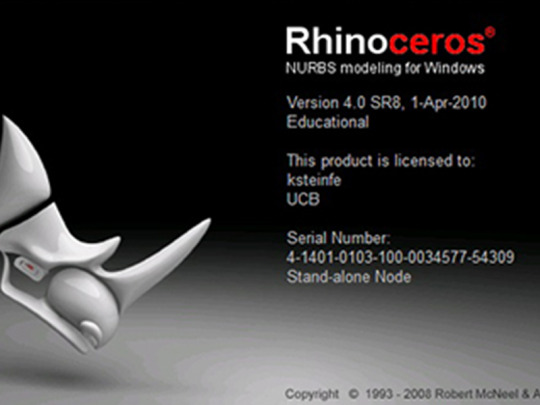
Let’s dive into what makes Rhino so awesome.
So, What Is Rhino?
At its core, Rhino is a 3D modeling software. But unlike other design tools that make you feel boxed in, Rhino gives you complete freedom to build anything — from real-world products to abstract art.
It works with something called NURBS (Non-Uniform Rational B-Splines) — which basically means you can create super-smooth, mathematically precise curves and surfaces. That’s why it’s perfect for designing everything from jewelry to yachts.
Who Uses Rhino?
That’s the fun part — everyone with a creative itch! Rhino has fans in many industries, and here’s how it plays a role in each:
• Architecture: Want to build a futuristic museum? Rhino’s your friend. Architects love it for conceptual designs and detailed blueprints.
• Automotive Design: Every cool curve on a car? Probably tested in Rhino first.
• Jewelry Design: Those delicate rings and intricate pendants? Made easier with Rhino’s precision tools.
• Product Design: From coffee makers to furniture, Rhino helps create the everyday things we love.
• Marine Design: Designing boats and luxury yachts? Rhino sails smoothly here too.
• Game & Multimedia: Game designers and digital artists use Rhino to create models for virtual worlds and CGI.
What Makes Rhino So Cool?
Rhino isn’t just another design app. Here’s why creatives keep coming back to it:
• Freedom to Create – Whether you're drawing freeform curves or modeling something with exact measurements, Rhino lets your imagination take over.
• Easy to Learn – You don’t need to be a tech wizard. The interface is beginner-friendly, yet powerful enough for pros.
• Supports 3D Printing – Rhino makes it super easy to prep your model for 3D printers. Great for hobbyists and professionals alike.
• Affordable One-Time License – No annoying monthly fees if you don’t want them. Buy it once and it’s yours.
• Customizable with Plugins – Want fancy renders? Add V-Ray. Into algorithmic design? Grasshopper is built right in.
A Day in the Life with Rhino
Picture this: You're designing a custom lamp for your workspace. You sketch out the idea on paper, but now you want to bring it to life.
Open Rhino – You start modeling the base using smooth curves and tweak it until it feels just right.
Switch to Perspective View – Now you spin your model around, admire the curves, zoom in for details.
Use Grasshopper – You decide to play with patterns on the lamp's shade using parametric design. Grasshopper makes that easy without coding.
Export for 3D Print – Done designing? Rhino helps you convert your model to STL for 3D printing.
From concept to reality — all in one tool.
The Magic of Rhino + Grasshopper
One of Rhino’s coolest features is Grasshopper, a visual programming language built right into Rhino. Don’t let the “programming” part scare you — it’s all about connecting blocks like Legos.
Want to design a pattern that changes based on sunlight direction? Or a building facade that reacts to temperature? Grasshopper helps you do all that. It’s a favorite among architects and experimental designers who love pushing the limits.
Not Just for Pros!
Here’s the best part: You don’t need a fancy degree or a giant company budget to use Rhino.
• Students use it to build their portfolios. • Freelancers use it for custom product designs and freelance gigs. • Hobbyists use it to design models for laser cutting, 3D printing, or just for fun!
There’s also a great community out there — from Reddit to YouTube — where people share tutorials, plugins, and tips for Rhino users of all levels.
Is Rhino Worth It?
Absolutely.
If you’re serious about 3D modeling or even just curious to explore the digital design space, Rhino is an excellent place to start. It’s reliable, flexible, and gives you room to grow.
https://www.tridaxsolutions.com/product/rhino/
Think of it like a digital sketchbook that also builds things in real life. It lets you be an artist, an engineer, and a dreamer — all at once.
So go ahead — try your hand at modeling that idea you've been thinking about. Rhino might just be the tool that turns your spark of imagination into something real.
0 notes
Text
Top 10 Computational Design Tools Every Architect Should Master in 2025

The field of architecture is evolving at an unprecedented pace. With technological advancements redefining how designs are imagined, developed, and executed, computational design has emerged as the most transformative approach in modern architecture. If you're an architect, design professional, or student aiming to stay ahead, mastering computational design tools isn’t just an option; it’s essential.
By 2025, computational workflows powered by AI, parametric modeling, and generative design will shape how projects are conceived. These tools not only boost creativity but also open avenues for efficiency, sustainability, and adaptive problem-solving. This guide will introduce you to the Top 10 Computational Design Tools every architect should be fluent in by 2025, giving you a roadmap to stay competitive and future-ready.
What is Computational Design?
Before jumping into the tools, it’s crucial to understand what computational design is all about. At its core, it revolves around algorithmic thinking, data-driven processes, and parameter-based design. Using these methods, architects can create complex geometries, simulate real-world conditions, and improve designs based on actionable data.
Unlike traditional approaches, computational design doesn’t limit creativity. Instead, it enhances it by offering vast possibilities for form and function optimization. Think of it as a toolbox that combines mathematics, geometry, and programming to help architects tackle modern challenges like sustainability, smart city design, and structural efficiency.
Top 10 Computational Design Tools for 2025
Here’s a curated list of must-learn tools for architects looking to lead the future of design.
1. Rhino 3D
Rhino 3D is the backbone of computational design. Known for its ability to handle complex geometries, it’s the go-to solution for creating intricate architectural forms with precise modeling. Whether you're designing bespoke façades or experimental structures, Rhino offers unparalleled flexibility and control.
Why Rhino 3D?
Industry standard for complex surface and solid modeling.
Integrates seamlessly with Grasshopper and several plugins.
Ideal for everything from initial design iterations to final fabrication.
2. Grasshopper
Grasshopper brings parametric design to life. Working as a visual programming language within Rhino, it allows architects to create complex forms, automate processes, and integrate multiple design solutions. From environmental analysis to AI plugins, Grasshopper’s versatility makes it indispensable.
Why Grasshopper?
Essential for parametric and generative design workflows.
Compatible with tools for analysis, fabrication, and AI integration.
Allows architects to explore iterative design possibilities.
3. Dynamo
For architects working with Autodesk Revit, Dynamo is a must. This visual programming tool automates BIM workflows, making tasks like parametric modeling and data management seamless within Revit.
Why Dynamo?
Bridges computational design and BIM processes.
Ideal for automating tedious manual workflows.
Enhances team collaboration on large-scale projects.
4. Blender (with Sverchok & Geometry Nodes)
Blender, an open-source 3D modeling and visualization tool, is gaining traction in architecture thanks to its flexibility. Paired with Sverchok or Geometry Nodes, it offers architects the ability to create generative and procedural designs for free.
Why Blender?
Excellent for architectural visualization and generative design.
Free and open-source, with active community support.
Great alternative for those starting with computational tools.
5. Autodesk Revit
When it comes to Building Information Modeling (BIM), Autodesk Revit reigns supreme. While primarily a BIM tool, it also supports computational design when used in tandem with Dynamo.
Why Autodesk Revit?
Streamlines architectural design and documentation.
Perfect for large-scale projects requiring precision.
Enhances collaboration across multidisciplinary teams.
6. Ladybug & Honeybee (Grasshopper Plugins)
For architects focusing on environmental and sustainable design, Ladybug and Honeybee are lifesavers. These open-source plugins integrate with Grasshopper to perform accurate daylighting, solar, and energy simulations.
Why Ladybug & Honeybee?
Helps create energy-efficient buildings.
Offers tools for climate analysis and daylight optimization.
A must-have for environmentally conscious architects.
7. AI Generative Design Tools
Cutting-edge AI-powered generative design tools like Autodesk Generative Design and Finch3D are pushing boundaries in terms of structural efficiency and space optimization. This empowers architects to explore ideas that go beyond their imagination.
Why AI Generative Tools?
Enables smarter, data-driven decision-making.
Optimizes layouts, material usage, and energy performance.
Simplifies iterative options for design refinement.
8. Karamba3D (Grasshopper Plugin)
Karamba3D is a go-to plugin for structural analysis within Grasshopper. By offering real-time feedback on a design’s structural performance, it allows architects to balance creativity and practicality.
Why Karamba3D?
Integrates structural simulation directly into your design process.
Enables quick adjustments without exporting to external software.
Great for designing geometrically complex structures.
9. Unreal Engine / Twinmotion
Visualization is becoming a key aspect of architectural design, and real-time rendering tools like Unreal Engine and Twinmotion are making immersive presentations easier than ever. They also integrate computational models for interactive walkthroughs.
Why Unreal Engine / Twinmotion?
Real-time rendering for highly realistic visualizations.
Interactive experiences for client presentations.
Integrates computational workflows for seamless communication.
10. Python (and C# Basics)
To fully unlock the potential of tools like Grasshopper and Dynamo, architects should learn basic programming with Python and C#. These skills allow for customization, automation, and the creation of highly specific workflows.
Why Python?
Universally applicable across computational design platforms.
Automates repetitive tasks and expands design capabilities.
Great for architects looking to push computational methods further.
Why These Tools Are Essential in 2025
The architecture industry is rapidly moving towards AI-inspired solutions, sustainable practices, and smart city infrastructure. Here’s why mastering these computational design tools will be critical:
Smarter and Faster Workflows: Automate repetitive tasks, gain real-time data insights, and deliver projects faster.
Competitive Edge: Clients are demanding optimized, data-informed designs that meet modern needs.
Sustainability: Computational tools help architects simulate energy performance and optimize resources.
Adaptation to Industry Expectations: Generative tools and AI simulations are no longer optional; they’re becoming standard expectations for top-tier firms.
How to Start Learning These Tools
Whether you’re new to computational design or looking to expand your expertise, here’s where you can begin:
Online Learning Platforms:
Rhino 3D & Grasshopper tutorials on YouTube. Dynamo and Revit courses on LinkedIn Learning. Python and programming basics on Codecademy.
Communities and Forums:
Join Grasshopper’s official forum or Blender’s vibrant community to ask questions and share knowledge.
Workshops & Certifications:
Attend workshops offered by platforms like McNeel or Autodesk.
Look for certification courses that enhance your resume.
Start small, focus on one tool, and gradually integrate new skills into your workflow. The future rewards those willing to explore and adapt.
Take the Lead in 2025
Computational design isn’t just a trend; it’s the future of architecture. Mastering tools like Rhino 3D, Grasshopper, and Dynamo will not only save you time and resources but will also allow you to solve complex design problems creatively. The industry needs architects who understand how to integrate technology, sustainability, and artistry into their work. Will you be one of them?
Begin your exploration today. Sign up for tutorials, join forums, and start experimenting with these tools. The future is computational, and it’s waiting for you to take the lead.
0 notes
Text
Editing Cinematic
So my plan for editing this is I want a Fade in and Fade out and to add some nature sounds to the background like birds chirping, wind, and trees bustling. I then found these copyright-free sounds on YouTube to put in the background:
youtube
youtube
^ I used Audacity to record them both at the same time and adjusted both of their YouTube volumes until I was happy with the audio balance :)

I then made some slight adjustments to my movie sequence and rendered it out again, I made the whole scene 5 seconds longer to allow for a longer camera hold at the start and end. I did this as I wanted to allocate that time to allow for the fade in and fade out effects.
My chosen software I will be using is Davinci Resolve as I am familiar with it from when I used to create Youtube videos many years ago so I know how to get this fade in and fade out effect.
I then set up a project and got my video imported in:

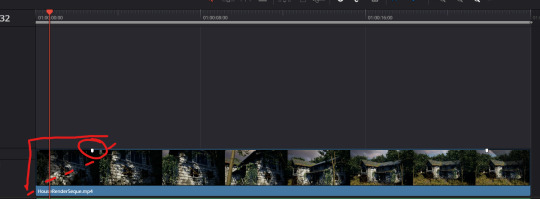
^ You drag this little white dot along the video until you are happy with the duration of the fade in or fade out. I really like this as its such an easy way of doing it without any complex plugins or effects methods.
The next step was to add the background audio which was going fine until I played the video back and the audio was only coming through one ear. I went straight to youtube and found this video:
youtube
I then had to right-click on the audio track and change its clip attributes to change the audio format from mono to stereo and change both source channels for the left and right earcup to embedded channel 1 (all shown in the images below):
BEFORE:

AFTER:

Now that Im all happy with the video the last step was to export it. I found this video below which walked me through how to do so in the delivery tab:
youtube
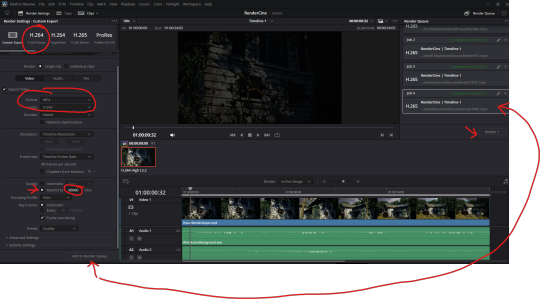
^ I had to change the codec to H.264, though as 265 I had to pay for a Windows extension to view it, which I think is stupid so I just used 264 and I still got a really good result.
NOW, After rendering out the scene something just didn't feel right to me like something was missing so I went on youtube and watched a couple of videos of people showcasing their work and this one stood out to me:
youtube
^ BUG NOISES!!! That was the thing that was missing! Crickets and grasshoppers were the missing parts of my scene as it is just so simple. I have long overgrown grass but no bug sounds? it just explains why something felt so out of place.
I then found this audio which I really liked a lot which added in some missing wind sound effects and bug noises:
youtube
I then added that into the track and rendered the video out again once more.

0 notes
Text
Cyclops
Turbocharging AnalysisThrough GPU Computing Cyclops is a ray-tracing analysis plugin for Grasshopper that utilises the power of modern GPUs to accelerate environmental simulations. It supports a range of analyses including radiation, sunlight and daylight and is capable of efficiently managing large-scale, complex geometries and high density analyses. The development of Cyclops is driven by…
0 notes
Text
How Learning Grasshopper Can Future-Proof Your Architecture Career
In today's fast-evolving architectural landscape, staying ahead requires more than just creative vision—it demands digital fluency. One of the most transformative tools in modern architecture is Grasshopper, the visual scripting plugin for Rhino 3D. Learning Grasshopper enhances your design capabilities and future-proofs your career by aligning you with the industry's shift toward parametric, sustainable, and performance-based design.
At RhinoProf, we help architects, students, and professionals master Grasshopper and key architectural software under one roof.
Why Grasshopper Matters More Than Ever
Our Online Architecture Course is no longer just about drawing and modeling; it's about data-driven, adaptable design. Grasshopper allows architects to build parametric models where every element is interconnected and modifiable. Need to change a façade's pattern based on sun exposure? Do you want to simulate structural performance or environmental impact? Grasshopper makes it possible—with precision and efficiency.
This kind of control isn't just impressive—it's becoming essential in firms using Building Information Modeling (BIM), sustainable strategies, and advanced fabrication methods.
Skills That Set You Apart
While many architects still rely on static modeling tools, those with Grasshopper 3D tutorial skills can:
Optimize building performance with environmental data.
Automate repetitive design tasks, saving time.
Design complex geometries that are not possible with traditional methods.
Integrate with plugins like Ladybug, Karamba, and Kangaroo for deeper performance analysis.
These skills make you more valuable to top-tier architecture firms and open doors to computational design, BIM coordination, digital fabrication, and sustainability consulting careers.
RhinoProf: Your One-Stop Learning Platform
At RhinoProf, we've created a space where architects can learn the Advanced Revit Documentation Course, Rhino, Grasshopper, AutoCAD, SketchUp, V-Ray, and more—all in one place. Our expert-led courses are designed for all levels and offer real project workflows, hands-on practice, and personalized guidance.
Whether you're a student building your portfolio or a professional looking to stay competitive, our training helps you stay relevant, skilled, and future-ready.
Final Thought
The future of architecture belongs to those who can blend creativity with computation. Learning Grasshopper now, especially through a comprehensive platform like RhinoProf, equips you with the tools to lead the next generation of design. Don't wait—invest in your future today
0 notes
Text
Best CAD Drafting Software for 2025

Whether you're designing skyscrapers or prototyping parts for the next big innovation, CAD drafting tools are the backbone of modern engineering and architecture. As we head into 2025, the landscape of CAD software continues to evolve rapidly with smarter features, better integrations, and cloud-based workflows. If you're considering upgrading or just curious about what tools are leading the charge, here's our list of the top 10 CAD drafting tools you should absolutely know about in 2025.
If you offer or depend on CAD drafting services, this list is going to be especially relevant.
1. Autodesk AutoCAD
Still the reigning champion in many drafting departments, AutoCAD continues to deliver precision and performance. The 2025 version features enhanced automation, better collaboration tools, and AI-driven commands that reduce repetitive tasks. With robust DWG file support and integration with cloud services like Autodesk Docs, it's still a go-to for 2D drafting.
2. SolidWorks
Especially popular in mechanical design, SolidWorks remains a strong player. Its 2025 update brings deeper integration with Dassault Systèmes' 3DEXPERIENCE platform, improved simulation capabilities, and real-time collaboration features. It's ideal for product development and prototyping.
3. Autodesk Fusion
Fusion is quickly becoming a favorite thanks to its all-in-one platform combining CAD, CAM, CAE, and PCB tools. The 2025 version introduces AI-assisted modeling, generative design improvements, and expanded manufacturing features. It's cloud-native, so it's great for remote teams.
4. BricsCAD
BricsCAD offers an affordable alternative to AutoCAD with similar DWG compatibility and a flexible licensing model. The 2025 edition has focused on AI-assisted drafting and machine learning to speed up drawing creation. Its ability to bridge 2D and 3D workflows makes it a solid contender.
5. SketchUp Pro
Originally loved by architects for quick 3D concept modeling, SketchUp Pro is now evolving into a full drafting and documentation tool. In 2025, it offers enhanced BIM capabilities, a sleeker interface, and improved LayOut integration for 2D documentation. Great for conceptual design and early-stage development.
6. DraftSight
DraftSight, developed by Dassault Systèmes, is another strong alternative to AutoCAD. The 2025 version boasts better 3D modeling capabilities and smoother DWG compatibility. It’s perfect for those who want professional-grade tools without the Autodesk price tag.
7. TinkerCAD
While it may seem basic compared to others, TinkerCAD has carved out a niche in education and rapid prototyping. The 2025 updates make it even easier to 3D print and simulate designs, making it a top choice for beginners or quick project ideation.
8. Rhino 3D
Rhino 3D continues to shine in industries like architecture, jewelry, and product design, thanks to its freeform modeling capabilities. The latest version enhances Grasshopper (its visual scripting tool) and supports even more plugins. Rhino's flexibility makes it a favorite for bespoke and complex modeling.
9. Onshape
Fully cloud-based, Onshape is revolutionizing collaborative CAD work. In 2025, it's leading the way in version control, browser-based modeling, and team-friendly tools. Onshape is excellent for product design firms and startups looking for scalability and remote-friendly workflows.
10. FreeCAD
For open-source enthusiasts, FreeCAD is getting more powerful with every release. The 2025 version has improved parametric modeling, a better GUI, and stronger support for industry-standard formats. It's ideal for those who want a cost-free yet capable solution.
How ProtoTech Solutions Helps
Staying ahead in CAD drafting is not just about the tools—it's about how you use them. That’s where ProtoTech Solutions steps in. With years of expertise in developing custom plugins, CAD automation tools, and providing tailored CAD drafting services, ProtoTech helps businesses get the most out of their software investments.
Whether you're looking to streamline your design workflows, create bespoke CAD tools, or outsource complex drafting tasks, ProtoTech can help you stay competitive in 2025 and beyond. Our team is fluent in all major platforms and can adapt to your unique project requirements.
The world of CAD drafting tools is more dynamic than ever. With AI, cloud computing, and collaborative tools reshaping workflows, it's essential to stay updated with what each platform offers. No matter which tool you pick from this list, pairing it with the right expertise and support, like what ProtoTech Solutions provides, can make all the difference.
Ready to level up your drafting game? Let ProtoTech Solutions be your CAD partner in innovation.
#CAD Drafting Tools for 2025#CAD Drafting Tools 2025#CAD Tools 2025#CAD Design#CAD Drafting#cad drafting services#outsource cad drafting services#cad outsourcing services#cad drafting outsourcing#outsource cad services#outsource drafting services#cad drafting outsourcing services#cad outsourcing#cad drafting company#cad outsourcing companies
0 notes
Text
youtube
In this update, I added the Cap input parameter, which is a Boolean value, that allows the user to cap the top level of the extruded geometry. The resulting output is the extruded 2D curves + the caps as separate objects.
The download link for the plugin is the description area on YouTube
#mcneel grasshopper#rhino grasshopper#grasshopper 3d#grasshopper plugins#grasshopper extrude to surface#grasshopper free plugins#grasshopper csharp#parametric 3d#parametric design#parametric modeling#miled rizk#Youtube
1 note
·
View note
Text
Shape Tomorrow’s Skylines Today with a BIM Architecture Course
In today’s changing world of construction, Building Information Modeling (BIM) is becoming a must-have skill for every aspiring architect. It helps design better, build faster, and reduce mistakes. A BIM in Architecture course teaches students how to use smart 3D models that not only show how a building looks but also how it works—making the entire design and planning process more accurate and efficient.
What is BIM in Architecture?
BIM (Building Information Modeling) is a digital process that enables architects to plan, design, construct, and manage buildings using intelligent 3D models. Unlike traditional blueprints, BIM incorporates data-rich models that simulate real-world performance—making it a dynamic tool for architectural innovation.
Why BIM Matters in Architecture Courses:
Modern architecture isn’t just about aesthetics. It’s about efficiency, sustainability, collaboration, and innovation. BIM empowers students to:
Visualize projects in 3D before they are built
Coordinate with structural, MEP, and construction teams seamlessly
Detect design clashes early, saving both time and money
Apply sustainable practices by analyzing energy consumption and material use
By integrating BIM into architecture courses, institutes prepare students for real-world challenges and industry expectations.
Key Benefits of Learning BIM in Architecture:
1. Enhanced Design Accuracy: BIM allows students to experiment with forms, materials, and space usage while maintaining structural integrity. It ensures fewer errors and reworks.
2. Improved Collaboration: Architects can easily collaborate with engineers, interior designers, and contractors through a single BIM model, enabling everyone to stay on the same page.
3. Cost and Time Efficiency: With real-time cost estimations and construction sequencing, BIM simplifies decision-making and project management.
4. Sustainability and Analysis: BIM supports green building design by helping architects analyze daylight, thermal performance, and material efficiency.
5. Real-World Simulation: From construction phasing to maintenance, BIM simulates how a building will perform over time—making it a powerful forecasting tool.
BIM Software Commonly Used in Architecture Courses:
Autodesk Revit – The most widely used BIM platform for architectural modeling
Archicad – Known for its user-friendly interface and collaboration features
SketchUp with BIM plugins – Ideal for quick concept designs with smooth BIM integration
Navisworks – Used for clash detection and coordination
Rhino + Grasshopper – For parametric and computational design using BIM workflows
How BIM is Shaping the Future Architect:
BIM – No longer optional, now a must-have skill for every architect. Leading architecture firms around the world now expect new graduates to be BIM-proficient. As the construction industry leans towards digital twin technology and smart buildings, those with BIM expertise are better equipped to lead the charge.
Case Studies:
Case Study 1: Educational Implementation of BIM – Urban Township Project by Architecture Students, Pune
Project Title: Sustainable Mixed-Use Township Design Location: Pune, Maharashtra Institution: XYZ School of Architecture Tools Used: Autodesk Revit, Navisworks Duration: 6 months (Academic Studio Project)
Objective:
The aim was to design a sustainable township covering 5 acres, including residential, commercial, and recreational zones. The focus was on integrating architectural design with sustainability, infrastructure planning, and multi-disciplinary coordination.
BIM Integration:
Students created comprehensive 3D models of the township using Revit, detailing individual building blocks, road networks, and green spaces.
Sun path analysis was conducted to position buildings for optimal natural lighting.
Navisworks was used to simulate construction phasing and detect conflicts in service areas (like HVAC and plumbing intersections).
Real-time material estimation and quantity take-offs were generated, helping students understand cost and resource implications.
Results:
Reduced design errors by 40% through clash detection
Enhanced sustainability with passive design strategies integrated via BIM simulations
The project won 1st prize in a National Design Competition for innovation in sustainable urban planning
Case Study 2: Sydney Opera House Goes Smart with BIM
Project Title: Digital Twin of Sydney Opera House Location: Sydney, Australia Firm: BIM Academy and Sydney Opera House Trust Tools Used: Autodesk Revit, 3D Laser Scanning, Asset Management Software Duration: Ongoing (Since 2017)
Objective:
To preserve and optimize the operation of the Sydney Opera House, a heritage structure with complex maintenance needs. The project involved converting the building into a digital twin for smarter asset management and renovation planning.
BIM Integration:
Laser scans of the entire structure were imported into Revit to create a highly detailed 3D BIM model
Integrated data included structural, mechanical, and electrical systems
BIM was linked with the Opera House’s facility management system to monitor maintenance, energy usage, and repairs
Enabled better decision-making without physical intervention or risking structural damage
Results:
Achieved 25% cost reduction in annual maintenance
Minimized operational downtime for public performances
Set a global benchmark for heritage conservation using BIM technology
Case Study 3: Internship-Based BIM Application – High-Rise Residential Tower in Dubai
Project Title: Al Noor Residences – 30-Story Residential Tower Location: Dubai, UAE Company: FutureSpaces Architecture and BIM Consultants Internship Role: Architectural Intern Tools Used: Revit, Navisworks Manage Duration: 3 Months
Objective:
To assist the architectural team in developing construction documentation and coordinating structural and MEP systems for a high-rise residential building.
BIM Integration:
The intern used Revit to create parametric 3D models of each floor with details on room layouts, balconies, and utility shafts
Navisworks was used for running weekly clash detection meetings with consultants from structural and MEP teams
The intern also contributed to material schedules and coordinated façade detailing using BIM sheets
Results:
Over 150 clash issues resolved before the site execution phase
Improved collaboration among international teams working across time zones
The intern’s performance led to a full-time job offer, demonstrating the industry demand for BIM proficiency
Conclusion:
The future of architecture is digital—and BIM is at the heart of it. For students, mastering BIM means unlocking a world of opportunities. It’s not just a skill; it’s a language that the modern architectural world speaks. By embracing BIM in your course curriculum, you’re not only designing buildings—you’re designing the future.
0 notes
Text
Custom C# component for making cutters.

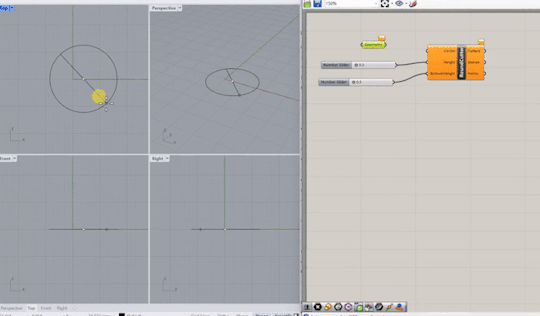

I wrote a C# grasshopper plugin to generate cutters.
#grasshopper3d#algorithmicdesign#baroqueplusplus#generativedesign#baroque++#csharp#jewelrydesign#jewelrycad
1 note
·
View note
Text
Rhino’s Role in Shaping the Future of Parametric Architecture: Trends and Predictions

Rhino has established itself as a cornerstone in the field of parametric architecture, offering architects unparalleled flexibility and precision in their designs. As parametric design continues to evolve, Rhino’s ability to integrate with advanced algorithms and plugins like Grasshopper is set to drive significant innovation in architectural practices. This guide explores the emerging trends in parametric architecture, including increased automation, the integration of AI, and the rise of sustainable design practices. We also delve into predictions for Rhino’s future, such as its potential to become even more integrated with BIM tools and its role in facilitating more complex, data-driven design processes. By staying ahead of these trends, architects can leverage Rhino to push the boundaries of what’s possible in architecture.
0 notes
Text
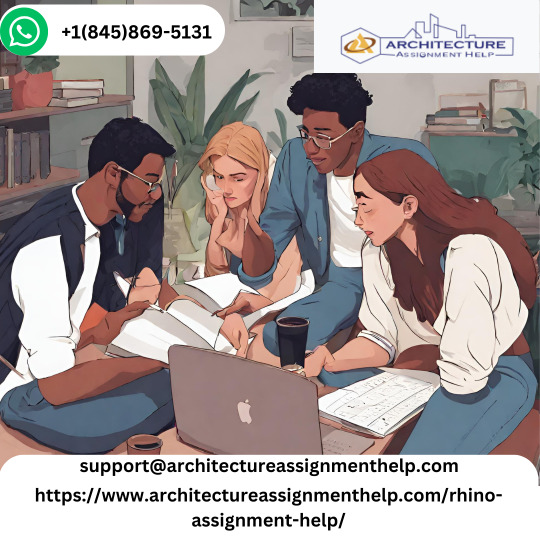
Mastering Rhino: Tackling Advanced Assignments
Are you ready to take your Rhino skills to the next level? As an architecture student or professional, mastering Rhino is essential for unleashing your creativity and efficiently executing complex designs. To help you sharpen your skills, we've crafted a tough yet insightful question-and-answer blog that will challenge and inspire you in equal measure. Wondering, "How to complete my rhino assignment effectively"?- Visit Architecture Assignment Help.
Question 1: You're tasked with designing a parametric facade for a futuristic building using Rhino. How would you approach this assignment, and what tools or techniques would you utilize to achieve a dynamic and visually striking design?
Answer: To tackle this assignment effectively, I would begin by conceptualizing the overall design language and functionality of the facade. Rhino's parametric modeling capabilities make it ideal for creating intricate designs that respond dynamically to various parameters. Utilizing tools like Grasshopper, I would set up a parametric model where parameters such as solar exposure, ventilation requirements, and aesthetic preferences can be easily adjusted to generate different iterations of the facade.
Using Grasshopper's extensive library of plugins and scripting capabilities, I would incorporate algorithms for generative design to explore a wide range of possibilities efficiently. By leveraging Rhino's intuitive interface alongside Grasshopper's computational power, I can iterate through designs rapidly, refining the facade's form and performance iteratively.
Question 2: You've been assigned to create a complex organic shape inspired by nature using Rhino. How would you go about modeling such a form, and what techniques would you employ to ensure precision and elegance in your design?
Answer: Creating organic shapes inspired by nature in Rhino requires a combination of creativity, precision, and understanding of digital modeling techniques. To start, I would gather reference images or sketches to inform my design direction and study the underlying geometries present in natural forms.
Using Rhino's robust surface modeling tools, such as Loft, Sweep, and Network Surface, I would gradually build up the desired shape, focusing on achieving smooth transitions and intricate details. For more complex organic structures, I might employ techniques like mesh modeling or subdivision surface modeling, which offer greater flexibility in capturing intricate details and irregularities.
Throughout the modeling process, I would constantly evaluate the form from multiple viewpoints, ensuring that it maintains both aesthetic appeal and structural integrity. Rhino's analysis tools, such as curvature analysis and surface deviation analysis, would be invaluable in this regard, allowing me to refine the shape while maintaining precision and elegance in the final design.
Question 3: Your assignment is to design a parametric furniture piece that seamlessly integrates functionality with aesthetic appeal using Rhino. How would you approach this task, and what considerations would you take into account to create a successful design?
Answer: Designing a parametric furniture piece in Rhino offers endless opportunities to explore innovative forms and functionalities. To begin, I would analyze the user's needs and the intended context of the furniture piece, considering factors such as ergonomics, materiality, and spatial constraints.
Using Rhino's parametric modeling capabilities, I would create a flexible model that allows for easy customization of dimensions, configurations, and aesthetic variations. Grasshopper would play a central role in this process, enabling me to establish relationships between different parameters and automate the generation of design iterations.
Incorporating principles of biomimicry and generative design, I would explore organic forms and patterns that not only enhance the visual appeal of the furniture piece but also optimize its performance and usability. Throughout the design process, I would conduct iterative testing and refinement, soliciting feedback from stakeholders to ensure that the final design meets both functional requirements and aesthetic expectations.
By mastering Rhino and leveraging its powerful tools in conjunction with innovative design methodologies, you can tackle even the most challenging assignments with confidence and creativity. Whether you're designing futuristic facades, organic shapes inspired by nature, or parametric furniture pieces, Rhino empowers you to bring your vision to life in ways that were once unimaginable. So roll up your sleeves, embrace the challenge, and let your imagination soar as you embark on your next Rhino assignment journey.
#architectureassignmenthelp#rhinoassignmenthelp#completemyrhinoassignment#university#college#student#assignment#onlinehelp#architecture#assignmenthelp#academicsupport
0 notes
Text
Optimizing Workflow Efficiency: Tips and Tricks for Rhino Grasshopper Users
In the fast-paced world of design, efficiency is key, and designers are constantly seeking ways to streamline their workflows. For users of "[Rhino Grasshopper]," a dynamic duo in the realm of parametric design, optimizing workflow efficiency is a journey of exploration and innovation. In this blog post, we'll delve into valuable tips and tricks to help Rhino Grasshopper users make the most of this powerful toolset.
Mastering the Basics: Before diving into advanced techniques, it's crucial to have a solid understanding of the basics of Rhino and Grasshopper. Familiarize yourself with the interface, core functionalities, and the relationship between Rhino's 3D modeling environment and Grasshopper's visual programming canvas. This foundational knowledge sets the stage for more efficient and effective parametric design.
Utilize Pre-Built Components: [Rhino Grasshopper] comes equipped with a vast library of pre-built components that perform specific functions. Rather than reinventing the wheel, explore and leverage these components to streamline your workflow. From basic geometric shapes to complex mathematical operations, these pre-built components can save time and effort.
Organize Your Grasshopper Definitions: As your designs become more complex, organization is key to maintaining a clear and efficient workflow. Group related components, use descriptive names, and color-code wires to visually organize your Grasshopper definitions. This practice not only enhances readability but also makes it easier to troubleshoot and modify designs.
Take Advantage of Data Trees: Understanding and effectively using data trees in Grasshopper can significantly improve workflow efficiency. Data trees allow you to manage and manipulate hierarchical data structures. By grasping this concept, you can efficiently handle arrays, lists, and branches within your designs, leading to more robust and adaptable parametric models.
Custom Scripting with C# and Python: For advanced users, custom scripting in languages like C# and Python can unlock additional capabilities within [Rhino Grasshopper]. Scripting allows you to create custom components tailored to your specific needs. While not necessary for all users, having a basic understanding of scripting can provide a powerful extension to your design toolkit.
Parametric Iterations for Design Exploration: Harness the power of parametric design by setting up dynamic iterations. Define parameters that control key aspects of your design, allowing for real-time adjustments and exploration of various iterations. This iterative process fosters creativity and enables you to fine-tune designs based on changing criteria.
Explore Third-Party Plugins: Extend the functionality of [Rhino Grasshopper] by exploring third-party plugins. There is a wealth of plugins created by the community and other developers that cater to specific design needs. Whether it's structural analysis, environmental simulation, or advanced geometry manipulation, these plugins can enhance your workflow.
Stay Connected with the Community: The [Rhino Grasshopper] community is a valuable resource for learning and collaboration. Engage with forums, attend workshops, and participate in collaborative projects. The insights and experiences shared within the community can provide solutions to challenges, introduce new techniques, and keep you updated on the latest developments in [Rhino Grasshopper].
Conclusion: Optimizing workflow efficiency in [Rhino Grasshopper] is a continuous journey of learning and exploration. By mastering the basics, organizing your definitions, leveraging pre-built components, and staying connected with the community, you can unlock the full potential of this dynamic duo. Whether you're a beginner or an advanced user, these tips and tricks are designed to enhance your parametric design workflow, making [Rhino Grasshopper] a more powerful and versatile tool in your creative toolkit. Happy designing!
0 notes